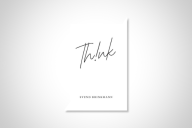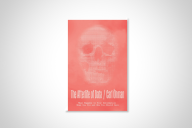You have /5 articles left.
Sign up for a free account or log in.
Somewhere along the way, Nietzsche’s apothegm “That which does not destroy me makes me stronger” lost all the irony and ambiguity it had in context and turned into an edifying sentiment -- a motivational catchphrase, even on the order of that poster saying, “Hang in there, baby!” with the cat clinging to a tree branch.
“Destroy” is often rendered “kill,” giving it a noirish and edgy sound. Either way, the phrase is uplifting if and only if understood figuratively, as a statement about mental resilience. For when taken literally, it is barely even half true, as a moment’s reflection reveals. A life-threatening virus can make us stronger -- i.e., immune to it in the future -- but a bullet to the brain never will. That truth would not have been lost on Nietzsche, who understood philosophy as a mode of psychology and both as rooted in physiology.
He expected the reader not just to absorb a thought but to test it, to fill in its outlines and pursue its implications -- including, I think, a contradictory thought: Whatever does not kill me might very well leave me wishing it had.
While riding her newly repaired bicycle early in the fall semester of 2003 -- pumping the pedals hard, with the strong legs of someone just entering her 50s and determined not to feel it -- Christina Crosby, a professor of English and feminist, gender and sexuality studies at Wesleyan University, got a branch caught in the front wheel. She went flying from her seat, landing on the pavement chin first, fracturing two vertebrae in her neck. The broken bone scraped her spinal cord. One indication of how fast it all happened is that reflexes to break a fall never kicked in. Her hands were not damaged at all.
“Serious neurological damage started instantly,” Crosby writes in A Body, Undone: Living On After Great Pain (NYU Press); “blood engorged the affected site, and the tissue around the lesion began to swell, causing more and more damage as the cord pressed against the broken vertebrae. I also smashed my chin into tiny pieces, tore open my lips, slashed open my nose, breaking the cartilage, and multiply fractured the orbital bone underneath my right eye.” She had been wearing wire-frame glasses and the force of the impact drove the metal into the bridge of her nose.
Crosby spent three weeks in the hospital, unconscious in intensive care for most of it, and only found out later, from her lover, Janet, that the neurosurgeons and plastic surgeons “debated who should go first.” The plastic surgeons won. It sounds as if they had proportionately the more hopeful and effective job to do -- piecing together her chin from fragments, reconstructing her mouth, removing the eyeglass frames from her flesh and leaving only a half-moon scar.
The neurological damage was much more extensive and included both paralysis and a loss of sensation from the neck down. In time, Crosby regained limited use of her hands and arms and could begin to overcome the extreme (and dangerous) atrophy that set in following the accident. She was able to return to teaching part time at Wesleyan in 2005.
The author refers to herself dictating the memoir, but it feels very much as a piece of writing -- that is, as something composed in large part through revision, through grappling with the enormous problem of communicating sequences of experience and thought that few readers will have shared. The accident occurred relatively late in her life and without warning; the contrast between her existence before and after the catastrophic event is made even starker by the fact that she cannot remember it happening. “My sense of a coherent self,” she writes, “has been so deeply affronted” that the book in large measure serves as a way to try to put the fragments back together again without minimizing the depth of the chasm she has crossed.
“You become who you are,” Crosby writes, “over the course of a life that unfolds as an ongoing interaction with objects and others, from the infant you once were, whose bodily cartography slowly emerged as you were handled by caregivers whose speech washed over you, to the grown-up you are today, drawn beyond reason to one person rather than another.”
On that last point she has been extraordinarily fortunate in whom she found herself drawn to: the bond she shares with Janet seems like a rope across the abyss, or more like a steel cable, perhaps. (I call her by her first name simply because the author does. The view from Janet R. Jakobsen’s side of things may be read in a thoughtful essay from 2007.) At the same time, A Body, Undone is anything but sentimental about the possibilities of growth and healing. As doctors lowered the dosage of Crosby’s painkillers, new forces imposed themselves on her daily life:
“I feel an unassuageable loneliness, because I will never be able to adequately describe the pain I suffer, nor can anyone accompany me into the realm of pain …. Pain is so singular that it evades direct description, so isolating because in your body alone. Crying, and screaming, and raging against pain are the signs of language undone. … I have no exact account of how pain changes my interaction with my students and my colleagues, but I know there are times when I don’t feel fully present. It’s not that the pain is so bad that it demands all my attention, but rather that it’s so chronic as to act like a kind of screen.”
No pseudo-Nietzschean bromides to be had here. There is also the difficult new relationship with one’s bowels when they cease to be under any control by the brain -- the discovery of a whole terra incognita beyond ordinary feelings of awkwardness and embarrassment. Crosby discusses her reality with a candor that must be experienced to be believed. And the reader is left to face the truth that one’s embodiment (and the world that goes with it) can change utterly and forever, in a heartbeat.







